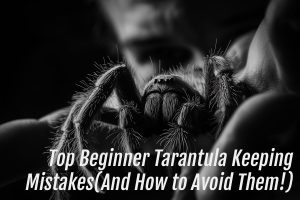The Anatomy Of A Scorpion
Scorpions are fascinating creatures that have a unique anatomy that allows them to thrive in a variety of environments. In this blog post, we will take a closer look at the anatomy of a scorpion and explore some of the key structures that make these arachnids so unique.
Cephalothorax
The cephalothorax of a scorpion is a significant part of its anatomy, encompassing both the head (cephalo-) and thorax (-thorax) regions. This fused body section plays a crucial role in the scorpion’s overall functionality and adaptation to its environment.
The head portion of the cephalothorax holds several key features. The most striking are the scorpion’s large and well-developed pincers, known as chelae. These chelae are used for capturing and manipulating prey, as well as for defense. The chelae vary in size and shape depending on the species, with some possessing powerful crushing force while others have more slender and agile pincers. Additionally, the head houses a pair of median eyes and several lateral eyes, providing the scorpion with a broad field of vision to detect movement and potential threats in its surroundings.
The thorax region of the cephalothorax bears six pairs of appendages. The first pair consists of the pedipalps, which are modified into sensory structures resembling small claws. The pedipalps play a crucial role in sensing and manipulating the environment, aiding in prey detection, and assisting with feeding. Following the pedipalps are four pairs of walking legs that scorpions use for locomotion. These legs are sturdy and adapted for traversing various terrains.
The cephalothorax serves as the central hub for the scorpion’s essential functions, including feeding, sensory perception, and defense. It houses the scorpion’s primary feeding apparatus, the chelae, which allows it to seize and immobilize prey. The sensory structures in the cephalothorax, such as the eyes and pedipalps, provide the scorpion with information about its surroundings, aiding in prey detection and navigation. Furthermore, the fused structure of the cephalothorax provides protection to vital organs, such as the nerve ganglia and respiratory structures, ensuring the scorpion’s overall survival and well-being.
Abdomen
The abdomen of a scorpion is a distinct and vital part of its anatomy, located posterior to the cephalothorax. This elongated body segment plays a crucial role in housing and protecting essential organs, as well as contributing to the scorpion’s overall functionality and survival.
The abdomen of a scorpion is divided into several segments, typically comprising seven segments in total. Each segment is covered by a hardened exoskeleton, providing protection and support to the internal structures. One of the most distinctive features of the scorpion abdomen is the presence of the metasoma, which consists of five segments that culminate in the telson, the sting-bearing structure.
The telson, found at the posterior end of the scorpion, contains the venom gland and the sharp, curved stinger. When threatened or attacking prey, the scorpion can extend its telson and deliver a venomous sting. The venom is a potent defensive weapon used to immobilize or subdue adversaries, as well as aid in the digestion of prey. The severity of the venom’s effects varies among different scorpion species.
The abdomen also houses crucial internal organs of the scorpion, including the digestive system, reproductive organs, and respiratory structures. The digestive system processes and breaks down food, while the reproductive organs play a vital role in the scorpion’s reproductive processes. The respiratory structures, known as book lungs, enable the scorpion to breathe air.
The abdomen’s overall structure and organization reflect the scorpion’s remarkable adaptations for survival in its environment. It houses vital organs and structures, including the venomous sting, digestive system, reproductive organs, respiratory structures, and silk glands. The abdomen is a testament to the scorpion’s efficiency and versatility, ensuring its ability to navigate its surroundings, capture prey, reproduce, and defend itself when faced with potential threats.
Pincers
The pincers, also known as chelae, of a scorpion are prominent features that adorn the front of its cephalothorax. These highly specialized appendages play a crucial role in the scorpion’s survival, aiding in capturing prey, defense, and various other activities.
The pincers of a scorpion are formidable structures, varying in size and shape depending on the species. They are typically comprised of two segments, with the movable finger and the fixed finger joined at a pivot point. The pincers are powered by strong muscles, allowing the scorpion to exert significant force when necessary.
The primary function of the scorpion’s pincers is to capture and hold prey. With their impressive dexterity, scorpions are capable of seizing a variety of prey items, ranging from insects to small vertebrates. The pincers’ sharp tips and robust grip enable them to secure the prey, preventing escape. In some species, the pincers possess specialized structures or ridges that enhance their ability to hold and manipulate prey.
The pincers also play a defensive role for scorpions. When threatened, scorpions may raise their pincers in a menacing posture, displaying their readiness to defend themselves. In some cases, scorpions may even use their pincers to pinch or deliver a painful nip to deter potential predators or intruders.
Beyond capturing prey and defense, the pincers serve other functions as well. Scorpions use their pincers to manipulate objects in their environment, rearrange their burrows, and aid in grooming activities. The pincers are also involved in courtship and mating behaviors, where males and females engage in an intricate dance, often involving mutual grasping of the pincers.
Stinger
The stinger of a scorpion is a potent defensive weapon that commands respect. Located at the end of its elongated abdomen, the stinger is a fearsome structure designed to inject venom into its prey or potential threats.
The scorpion’s stinger is a curved, needle-like appendage known as the aculeus. It is connected to the venom gland, which produces and stores a potent venom cocktail. When threatened or attacked, the scorpion can extend its stinger and deliver a venomous sting. The venom consists of a complex mixture of toxins, enzymes, and peptides that vary in potency among different scorpion species.
The primary purpose of the scorpion’s stinger is defense. When faced with danger, the scorpion will arch its tail over its cephalothorax, ready to strike if necessary. The stinger is armed with a sharp, barbed tip that penetrates the victim’s skin, allowing the venom to be injected. The venom acts as a potent immobilizer or paralyzer, incapacitating the prey or deterring potential predators.
The effects of a scorpion’s sting can vary from mild discomfort and pain to severe reactions, depending on the species and the individual’s sensitivity. While most scorpions are not lethal to humans, some species possess venom that can cause more significant harm or even be fatal if medical attention is not sought.
It is worth noting that scorpions do not sting humans unless they feel threatened or provoked. They prefer to use their venom as a last resort to ensure their own survival. However, caution should be exercised when encountering scorpions in their natural habitats to avoid potential stings.
Eyes
The eyes of a scorpion are remarkable sensory organs that contribute to its survival and ability to navigate its environment. While scorpions are known for their nocturnal lifestyle, they possess a range of eyes that allow them to perceive the world around them, even in low-light conditions.
Scorpions typically have two to five pairs of eyes, depending on the species. These eyes are situated on the top portion of their cephalothorax. The most prominent and noticeable pair is the median pair of eyes, located at the front of the head. These eyes are typically larger and provide a broader field of vision.
The eyes of a scorpion are adapted to detect motion and changes in light intensity. They are especially sensitive to ultraviolet (UV) light, which is abundant in moonlight and starlight. This ability to perceive UV light aids scorpions in hunting prey, navigating their surroundings, and avoiding potential threats.
While scorpions possess eyes, their vision is not as well-developed as in some other arthropods. Their eyes can detect movement and changes in light, but they rely more on other sensory organs, such as their pincers and the specialized hairs on their bodies, to navigate and locate prey.
The positioning of the eyes on the top of the cephalothorax allows scorpions to scan their surroundings and monitor potential threats from all directions. This arrangement enhances their ability to detect movement and maintain awareness of their surroundings, even in dark or dimly lit environments.
Legs
The legs of a scorpion are vital appendages that contribute to its mobility, stability, and overall functionality. Scorpions typically have eight legs, which emerge from the sides of their cephalothorax. These legs are sturdy, adapted for different purposes, and play a crucial role in their survival.
The legs of a scorpion are segmented, allowing for flexibility and movement. Each leg consists of seven segments, including the coxa, trochanter, femur, patella, tibia, metatarsus, and tarsus. The segments are connected by joints that enable the scorpion to flex and extend its legs as needed.
The primary function of the scorpion’s legs is locomotion. They enable the scorpion to move efficiently across various terrains, such as sand, soil, rocks, or vegetation. The sturdy structure of the legs provides stability, allowing the scorpion to navigate challenging environments and maintain balance while capturing prey or defending itself.
Additionally, the legs of a scorpion are equipped with sensory structures that aid in detecting vibrations and movements. These structures, called slit sensilla, are sensitive to touch and allow the scorpion to perceive its surroundings. The legs also have specialized setae that provide tactile information, aiding in prey detection and navigation.
Certain species of scorpions have adapted legs for specific purposes. For example, desert-dwelling scorpions may have legs that are elongated and slender, helping them move efficiently across the shifting sands. Arboreal scorpions may have legs with adaptations that facilitate climbing and gripping onto surfaces.
Cuticle
The cuticle of a scorpion is a protective outer covering that plays a crucial role in maintaining its structural integrity and providing defense against various environmental challenges. Composed primarily of chitin, a tough and flexible protein, the cuticle forms a sturdy exoskeleton that covers the entire body of a scorpion.
The cuticle serves as a physical barrier, shielding the scorpion’s soft tissues and internal organs from external threats, such as predators, abrasion, and desiccation. It provides durable armor that helps protect the scorpion from physical injuries and prevents excessive water loss.
The cuticle of a scorpion is periodically shed through a process called molting. As a scorpion grows, its old cuticle becomes tight and restrictive. To accommodate its increasing size, the scorpion undergoes molting, shedding its old cuticle and revealing a new, larger one beneath. During molting, the scorpion secretes enzymes that soften the old cuticle, allowing it to break open and be shed. Once the old cuticle is discarded, the scorpion rapidly absorbs water and expands its body to fit into the new cuticle. The new cuticle is initially soft and vulnerable, gradually hardening and darkening over time.
In addition to protection, the cuticle also contributes to the scorpion’s overall appearance and coloration. The pigments present in the cuticle give scorpions their distinct hues, ranging from pale yellow and brown to dark black or blue.
The cuticle of a scorpion is a remarkable adaptation that provides protection. It serves as a robust exoskeletal armor, safeguarding the scorpion’s internal organs from harm and preventing excessive water loss. Through the molting process, the scorpion can shed its old cuticle and replace it with a larger, stronger one as it grows. The cuticle is an essential feature that enables scorpions to thrive in diverse habitats while maintaining their resilience and survival capabilities.
Conclusion
In summary, a scorpion’s anatomy is a fascinating example of specialized adaptations that enable it to thrive in diverse environments. The cephalothorax houses essential features like the pincers, eyes, and legs, allowing for prey capture, sensory perception, and efficient locomotion. The abdomen contains vital organs, while the stinger serves as a potent defense mechanism, delivering venomous stings. The eyes, although not highly developed, detect motion and changes in light, aiding in navigation. The legs provide stability, mobility, and sensory capabilities, while the cuticle acts as a protective exoskeleton. Together, these anatomical elements work in harmony, empowering the scorpion to survive and fulfill its role as a skilled predator. Understanding the intricacies of a scorpion’s anatomy sheds light on its remarkable adaptations and the unique strategies it employs for survival in its natural habitat.
Other Helpful Info!
If you found this post helpful, please consider sharing it. It really helps the site in the search algorithm! Thanks!
Do you have inverts and arachnids? Want a fun way of tracking them? Then download Arachnifiles for Android or iOS today! It’s free!
Want to read more helpful blog posts? Click here to view other blog posts!
Want to read more about invertebrate care? Click here to view other care guides!




